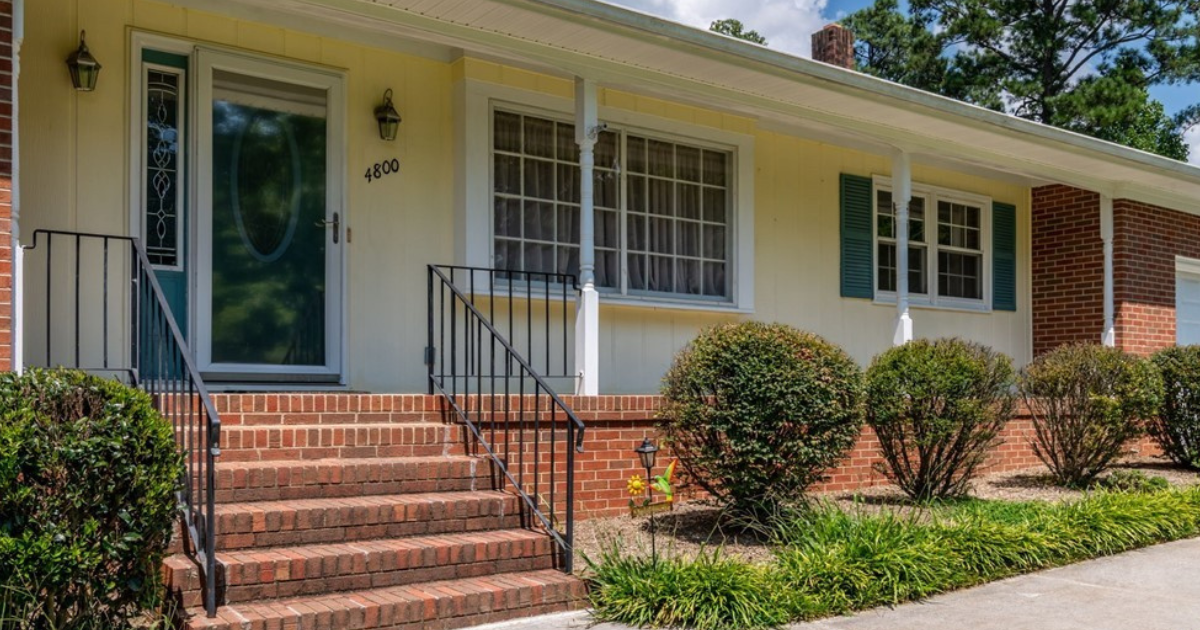Refinancing your mortgage can be a powerful tool—whether you're trying to lower your monthly payment, shorten your loan term, or tap into your home's equity. But how do you actually go about it? What steps are involved, and how do you know if refinancing is even the right move?
In this guide, we’ll walk you through how mortgage refinancing works, what the process looks like, and how CapCenter makes it easier and far more affordable with our Zero Closing Cost refinance offer.
What Is Mortgage Refinancing?
Mortgage refinancing means replacing your existing home loan with a new one. You’re essentially taking out a new mortgage to pay off the current one, ideally under better terms.
Common reasons homeowners refinance include:
- Lowering their interest rate
- Reducing their monthly payment
- Switching from an adjustable-rate to a fixed-rate loan
- Shortening or extending their loan term
- Taking cash out using home equity
The process is similar to when you first bought your home—but with one major difference: you already own the house. That means no moving boxes, no new address—just a fresh loan that better fits your financial goals.
Should You Refinance Your Mortgage?
Before jumping in, it’s important to assess whether refinancing makes sense for you right now. Ask yourself:
- Have interest rates dropped since I got my current mortgage?
- Has my credit score improved?
- Do I want to shorten my loan term or go from an ARM to a fixed-rate?
- Do I need access to cash for home improvements or debt consolidation?
- How long do I plan to stay in the home?
Refinancing can save you a significant amount over time—but only if the numbers work in your favor. And if you refinance with a lender that charges hefty fees, those savings can evaporate quickly.
That’s where CapCenter comes in. Our Zero Closing Cost refinance removes the biggest barrier most homeowners face when considering a refinance: the cost.
What Does It Cost to Refinance?
On average, refinancing a mortgage costs between 2% and 6% of the loan amount. That includes lender fees, third-party services (like the appraisal), title insurance, and other closing costs.
For a $350,000 loan, that could mean paying up to $21,000 just to restructure your mortgage—even if the rate is lower.
But with CapCenter’s Zero Closing Cost refinance, you don’t pay those fees out of pocket. We cover lender fees, appraisal costs, title settlement charges, and more, so you can enjoy the benefits of refinancing without the financial friction.
See how much you can save with our refinance calculator »
Step-by-Step: How to Refinance a Mortgage
1. Define Your Goal
Start with clarity. What do you want your refinance to accomplish? Your answer will determine the right loan product and structure.
For example:
- If you want to lower your monthly payment, you may aim for a lower interest rate or longer term.
- If you want to pay off your loan faster, a shorter term may be right—even if the monthly payment goes up slightly.
- If you need to access equity, you may want to explore a cash-out refinance or home equity loan (CapCenter offers both).
Having a defined goal will help your lender pair you with the best loan option.
2. Check Your Credit & Gather Your Docs
Just like your original mortgage, refinancing involves verifying your income, credit, and assets. You’ll want to:
- Review your credit report and score
- Gather pay stubs, W-2s, tax returns, and bank statements
- Estimate your home’s current value (use CapCenter’s Home Value Estimator)
While the underwriting process isn’t as daunting the second time around, being prepared can speed things up.
3. Compare Lenders and Offers
This is the step where many homeowners get stuck—and it’s also where you stand to save (or lose) the most money.
Every lender has different rates, fees, and timelines. Some charge points upfront. Others advertise low rates but bury fees in fine print.
At CapCenter, we’ve simplified this entire step. Our transparent, no-nonsense pricing means what you see is what you get. No games. No padded fees.
- Zero Closing Costs—No lender fees, no hidden charges
- Low, competitive rates—without buying points
- Quick closings—often in as little as 3 weeks
We encourage you to shop around—but when you do, compare everything, not just the interest rate.
4. Apply and Lock Your Rate
Once you’ve chosen a lender, it’s time to formally apply. You’ll complete a refinance application, authorize a credit pull, and provide financial documents.
If you're refinancing with CapCenter, our digital mortgage platform makes this part simple and secure.
Once your application is underway, you’ll have the option to lock your interest rate. This guarantees the quoted rate even if market rates increase while your loan is being processed.
At CapCenter, we offer flexible rate lock options—so you can refinance with confidence, no matter what the market does tomorrow.
5. Appraisal and Underwriting
Depending on your loan and property type, your lender may order an appraisal to determine your home’s current value. This is especially important if you're doing a cash-out refinance or if your loan-to-value (LTV) is near qualifying thresholds.
Then, the underwriting team reviews all your submitted documentation to ensure everything meets program guidelines.
Tip: Be responsive during this phase. The faster you submit requested items, the quicker you’ll close.
6. Clear to Close and Closing Day
Once underwriting gives you the green light, you’ll receive a Closing Disclosure (CD) that outlines your loan’s final terms and numbers.
Then comes closing day—this is where you sign your new loan documents. If you're refinancing with CapCenter, closing is seamless. We cover the cost of the attorney or settlement agent as part of our Zero Closing Cost promise.
Funds are typically disbursed a few days after closing (due to a mandatory 3-day rescission period for most refinances). Your old loan is paid off, and the new one begins.
What Happens to My Current Mortgage?
Your current loan will be paid off by your new lender at closing. You won’t need to notify your old servicer—they’ll receive the payoff funds and send you a final statement.
It’s important to keep making payments on your old loan until the refinance is complete. Don’t assume the refinance is finalized just because you’ve applied or signed some paperwork.
If you’re unsure when to stop payments, our team at CapCenter will walk you through it and keep you in the loop every step of the way.
What If I Don’t Want to Start Over?
A common concern is the idea of “starting over” with a new 30-year loan term. But you don’t have to restart your timeline if you don’t want to.
Many lenders—including CapCenter—offer flexible term options. Want a 27-year loan to match the time left on your current mortgage? No problem. Prefer to drop down to 15 years to build equity faster? We can do that too.
You’re not locked into standard terms. Your refinance can be tailored to your goals.
What About a Home Equity Loan Instead?
If you’re looking to tap into your home equity but don’t want to refinance your entire mortgage, a Home Equity Loan might be a better fit—especially if your current mortgage rate is lower than today’s rates.
CapCenter offers standalone home equity loans with Zero Closing Costs as well, so you can access cash without disrupting your existing mortgage.
You can learn more about CapCenter’s Home Equity Loan here »
Why Refinance with CapCenter?
Most lenders make you choose between high fees or complicated tradeoffs. CapCenter removes the biggest obstacle: closing costs.
Our refinance clients love us because:
- We charge Zero Closing Costs—not just “no lender fees,” but truly no out-of-pocket closing costs
- We offer competitive rates—you’re not trading savings for a higher rate
- We make it simple and transparent—no surprises, no fine print
- We’ve been doing this for nearly 30 years—and we’ve helped thousands save
And the best part? Our entire process is in-house—from processing to underwriting to closing. That means fewer delays, faster answers, and better service.
Start your refinance with CapCenter today »
FAQs About Refinancing a Mortgage
How soon can I refinance after buying a home?
You can usually refinance as soon as 6 months after your original closing, though some lenders allow sooner. Cash-out refinances may have longer requirements.
Will refinancing hurt my credit?
It may cause a slight, temporary dip due to the credit inquiry and new account, but most homeowners recover quickly. Long-term, it can help your credit by lowering your payment or improving your debt mix.
Can I refinance with bad credit?
It depends. A higher credit score generally gets you better rates, but some programs (like FHA Streamline) allow lower scores. Talk to a lender about your options.
What’s the difference between rate-and-term and cash-out refinance?
A rate-and-term refinance changes your rate, term, or both—without pulling equity. A cash-out refinance lets you borrow against your home’s equity and take money out at closing.
Can I refinance with the same lender?
Yes—but it’s smart to compare multiple offers. Even if your current lender offers a refinance, you might find better terms or lower costs elsewhere. (Spoiler: CapCenter’s Zero Closing Costs usually win out.)
Final Thoughts
Refinancing a mortgage doesn’t have to be confusing or expensive. Whether you're looking to lower your rate, eliminate PMI, or tap into home equity, the steps are clear—and with the right lender, the process can be smooth and rewarding.
At CapCenter, we’re not just another mortgage lender. We’ve built our reputation on honesty, simplicity, and Zero Closing Costs. If you’re thinking about refinancing, talk to us. You’ve got nothing to lose—and thousands to save.
Get a free refinance quote today »




